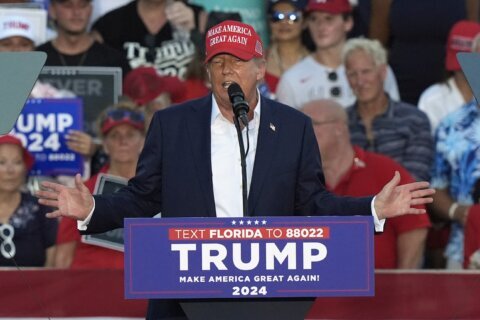Historically, stocks tend to go up over time — especially over relatively long time horizons of five, seven, 10 years or more. But, while there is no doubt that stocks are an excellent long-term investment, the markets don’t go straight up in a continuous, unbroken line. Markets fluctuate up and down for all kinds of reasons, including the state of the economy, the interest rate environment and industry conditions.
While no one can predict when downturns, stock market crashes or bear markets will happen or how long they will last, smart investors prepare for them ahead of time.
[Sign up for stock news with our Invested newsletter.]
Stock Market Crashes in History
The most famous and most devastating stock market crash was the Wall Street crash of 1929. It happened in October of that year and marked the beginning of the Great Depression, which led to widespread unemployment and poverty. Since then, we’ve improved regulatory oversight and curbed speculative excesses in the financial markets. We’ve come a long way toward mitigating risks, but we have not been able to eliminate crashes.
Fifty-eight years later, on Oct. 19, 1987, the new technology of computer-programmed trading — along with a dangerous state of stock overvaluation and other factors that experts are still debating — combined to cause the Crash of ’87. The Dow Jones Industrial Average fell 22.6% on that fateful day. It was not a good time to be an equity investor, but that frightening event led to the implementation of market circuit breakers and other innovative measures that have made investing safer.
The 21st century has been excellent for stocks so far, but this era has not been immune to troubling crashes. The dot-com bubble burst in March 2000 and caused a prolonged bear market that significantly damaged what was a roaring economy. In the fall of 2008, another bubble — this time a housing and commercial real estate bubble — popped and had the same deleterious effects on stocks.
More recently, in early 2020, fears surrounding the COVID-19 pandemic caused a pronounced but thankfully short stock market crash.
Are We Headed for a Stock Market Crash?
The economy and markets made an excellent recovery from the effects of COVID-19. The broad market, as measured by the S&P 500, has appreciated more than 43% in the two years ended July 2. While that kind of spectacular performance is appreciated by investors, such dramatic growth in such a short time has given some market watchers pause. An increasing number of analysts and asset managers are worried that high stock prices have caused the market to become overvalued. There is growing concern over the possibility of a significant correction or a crash in the near future.
Persistent high interest rates are another concern. Post-COVID inflation was originally thought to be a transitory phenomenon. Unfortunately, rising prices have proven to be more enduring than anyone would like. The Federal Reserve, under the leadership of Chair Jerome Powell, raised rates dramatically to combat a runaway consumer price index. Inflation is moderating, but in too many categories prices are still going up too fast. Investors are having to confront the real possibility of higher rates for much longer than anticipated. Interest rates represent the cost of capital. A prolonged period of elevated rates could spell trouble for corporate profits, consumer sentiment and the stock market.
Overvalued stocks and high rates, however, are not the only issues facing the equity markets. For one thing, wars raging in Eastern Europe and the Middle East are fomenting geopolitical tensions around the world. The unprecedented and seemingly unsustainable debt levels of the U.S. are another reason to worry.
Stock market crashes are notoriously difficult to predict. That’s why they usually take investors by surprise. The timing and duration of the next downturn remain unknown, but, given today’s precipitous circumstances, it’s best to be prepared.
What ETFs Can Hedge Against a Stock Market Crash?
A bona fide stock market crash will affect the entire market. When Wall Street professionals talk about hedging against a downturn, they are talking about minimizing the effects of a crash and positioning a portfolio to benefit from the rebound that is bound to come.
You may have heard the term “flight to safety” in relation to stock market drawdowns. That phrase is simply a reference to the tendency of investors to focus on high-quality, economically resilient investments or historically stable investments that have little correlation to the broad market.
To be specific, defensive stocks in the consumer staples, public utilities and health care sectors can help hedge a portfolio against a market crash. In addition, non-correlated assets such as commodities and precious or industrial metals are popular hedges. Short-term government bonds are another asset that may help lessen the impact of an unexpected downturn. Some real estate investment trusts, or REITs, can do the same.
Fortunately for retail investors, there are many exchange-traded funds, or ETFs, issued by credible asset managers that invest in exactly the kinds of companies, assets and industrial sectors that can defend you and your holdings in a sharp, unexpected correction. If you’re worried about the market, here are seven ETFs you can use to hedge against a stock market crash:
— The Utilities Select Sector SPDR ETF (ticker: XLU)
— Vanguard Consumer Staples ETF (VDC)
— iShares Global Healthcare ETF (IXJ)
— iShares 1-3 Year Treasury Bond ETF (SHY)
— SPDR Gold MiniShares (GLDM)
— iShares Residential and Multisector Real Estate ETF (REZ)
— Invesco DB Base Metals Fund (DBB)
The Utilities Select Sector SPDR ETF (XLU)
XLU is a $13.8 billion ETF that tracks the Utilities Sector Index. Because the fund mirrors the index and has a very reasonable expense ratio of just 0.09%, investors can expect XLU to come very close to matching the performance of its benchmark.
Like the index it follows, XLU is designed to represent the utility sector of the S&P 500 and to give investors defensive exposure to electric, water, natural gas and renewable utility companies. These critical services are fundamental to daily life for consumers and businesses. The revenue streams of regulated utilities like those held in XLU are very stable.
This ETF has a 12-month trailing yield of 3%, which will help lessen the blow during a market crash.
Vanguard Consumer Staples ETF (VDC)
Companies in the consumer staples sector produce necessary and essential goods like food, beverages, household staples and hygiene products. Demand for these products tends to stay high even if the market crashes or the economy turns bad.
The investment objective of VDC is to track the MSCI US Investable Market Consumer Staples 25/50 Index. VDC is a $6.8 billion fund with a 0.10% expense ratio. In the unfortunate event of a sharp market drawdown, the stocks inside VDC should fare better than other equities. This is because the consumer staples sector comprises industries that are proven to be less sensitive to economic cycles.
Additionally, the fund has a yield of 2.5% on a trailing 12-month basis.
iShares Global Healthcare ETF (IXJ)
The demand for non-elective health care services is highly inelastic. Put simply, demand for drugs, medical devices, hospital services and other health-related products does not significantly decrease during market corrections, bear markets or economic turmoil.
That’s why IXJ figures prominently on this list. IXJ is designed to track the performance of the S&P Global 1200 Healthcare Sector Index. According to S&P Global, the company that created and maintains the benchmark, that index represents the health care sector of the S&P Global 1200 index.
IXJ is a $3.9 billion fund with a reasonable expense ratio of 0.42%. It’s not an income vehicle, but it does have a trailing 12-month yield of 1.3%. This ETF should definitely be included in a portfolio that’s meant to hedge against an equity market sell-off.
iShares 1-3 Year Treasury Bond ETF (SHY)
When the market is melting down, many investors head toward the safety of government bonds. In particular, short-term Treasury bonds make an excellent hedge against market crashes. They are less volatile and less susceptible to interest rate risk than their long-term counterparts.
SHY is a $24 billion Treasury bond ETF that is currently yielding 3.4% on a 12-month trailing basis. As its name implies, the fund invests in U.S. government issues with maturities of between one and three years.
SHY is an excellent ETF for investors looking for targeted exposure to the short end of the government bond market who might also be worried about the stock market taking a tumble.
[7 of the Best High Dividend ETFs to Buy Now]
SPDR Gold MiniShares (GLDM)
GLDM is a straightforward, low-cost ETF designed to give retail and institutional investors an easy and convenient way to own gold.
For centuries, gold and other precious metals have been seen as a store of value and a hedge against inflation, economic turmoil and falling markets. As one might expect, gold is the only asset class this fund holds.
Gold might be the oldest hedge against the declining value of stock market shares and paper currencies. GLDM is a cost-effective way to participate in the gold market without the high costs and cumbersome storage issues associated with trading coins, bars and bullion.
The fund holds $7.4 billion in assets and has an expense ratio of just 0.10%.
iShares Residential and Multisector Real Estate ETF (REZ)
Even if the market is tanking, people still need a place to live and will still do their best to pay the rent. That’s the investment rationale behind using REZ to hedge against a stock market crash.
REZ is a $634 million REIT ETF that tracks the FTSE Nareit All Residential Capped Index. This fund makes an especially good defensive investment because, in addition to residential REITs, it holds self-storage and health care REITs as well. Both of those real estate classes have proven to be very resilient in the face of bear markets and increased volatility.
The fund boasts a healthy 12-month trailing yield of 2.8%, and, like other quality REIT ETFs, it provides a steady income that can be very helpful during times of market turbulence. With an expense ratio that comes in at 0.48%, REZ is reasonably priced as well.
Invesco DB Base Metals Fund (DBB)
Base metals such as copper, aluminum, nickel and zinc are tangible assets that have an inherent value that’s not directly correlated to the stock market. These metals are widely used in a variety of industries, including manufacturing, residential and commercial construction, and high technology. The market will always go up and down, but demand for base metals should stay strong despite fluctuations.
DBB tracks an index that is not well known outside the metals industry. Specifically, it mirrors the DBIQ Optimum Yield Industrial Metals Index, which is made up of aluminum, zinc and copper stocks.
In normal market conditions, DBB is an aggressive investment that’s not suitable for conservative investors. When facing a market crash, however, the current 12-month trailing yield of 6.4% and the non-correlated diversification of this ETF may be just what is needed.
DBB has assets of $196 million and an expense ratio of 0.75%, which might be considered high for some index funds but is not out of line compared to its peers.
More from U.S. News
How to Invest During Rate Cuts
5 Best Nuclear Energy Stocks and ETFs to Buy Now
7 ETFs to Hedge Against a Stock Market Crash originally appeared on usnews.com
Update 07/03/24: This story was previously published at an earlier date and has been updated with new information.







